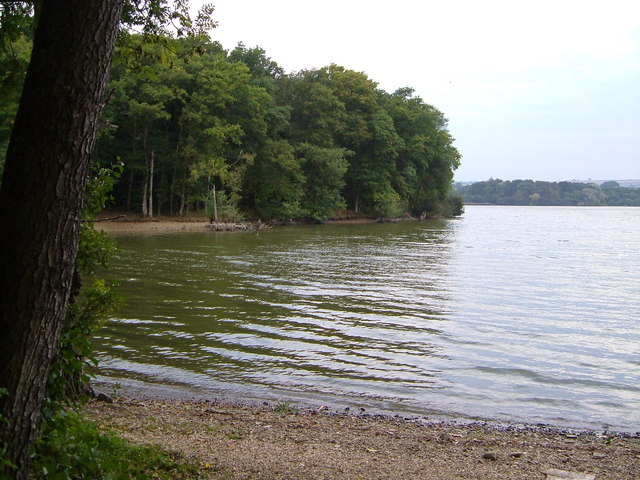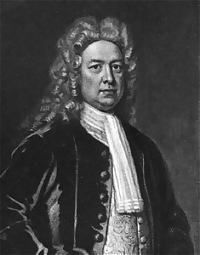|
Knowle St Giles
Knowle St Giles is a village and civil parish in the county of Somerset, England, situated on the River Isle south of Ilminster and north east of Chard. The village has a population of 244. The parish includes the village of Cricket Malherbie. History In the Domesday Book of 1086, Knowle St Giles is recorded as having small holdings by five villani and four bordarii. In the medieval period this grew with the reclamation of forest on Windwhistle Hill. The parish of St Giles Knowles was part of the South Petherton Hundred. Governance The parish council has responsibility for local issues, including evaluating local planning applications, initiating projects for the maintenance and repair of parish facilities, consulting with the district council on the maintenance and improvement of highways, drainage, footpaths and street cleaning, working with the police, district council and neighbourhood watch groups on crime, security and traffic, and assessing environmental and conservat ... [...More Info...] [...Related Items...] OR: [Wikipedia] [Google] [Baidu] |
Chard, Somerset
Chard is a town and a civil parishes in England, civil parish in the English county of Somerset. It lies on the A30 road near the Devon and Dorset borders, south west of Yeovil. The parish has a population of approximately 14,000 and, at an elevation of , Chard is the southernmost and one of the highest towns in Somerset. The name of the town was ''Cerden'' in 1065 and ''Cerdre'' in the Domesday Book of 1086. After the Norman Conquest, Chard was held by the Bishop of Wells. The town's first charter was from John of England, King John in 1234. Most of the town was destroyed by fire in 1577, and it was further damaged during the English Civil War. A 1663 will by Richard Harvey of Exeter established Almshouses known as Harvey's Hospital. In 1685 during the Monmouth Rebellion, the pretender James Scott, 1st Duke of Monmouth, Duke of Monmouth was proclaimed King in the Town prior to his defeat on Battle of Sedgemoor, Sedgemoor. Chard subsequently witnessed the execution and traitor' ... [...More Info...] [...Related Items...] OR: [Wikipedia] [Google] [Baidu] |
Non-metropolitan District
Non-metropolitan districts, or colloquially "shire districts", are a type of Districts of England, local government district in England. As created, they are sub-divisions of non-metropolitan county, non-metropolitan counties (colloquially ''shire counties'') in a two-tier arrangement. Non-metropolitan districts with Borough status in the United Kingdom, borough status are known as ''boroughs'', able to appoint a Mayors in England, mayor and refer to itself as a borough council. Some shire counties, for example Cornwall, now have no sub-divisions so are a single non-metropolitan district. Typically, a district will consist of a market town and its more rural hinterland. However, districts are diverse, with some being mostly urban (such as Dartford) and others more polycentric (such as Thurrock). Structure Non-metropolitan districts are subdivisions of English non-metropolitan county, non-metropolitan counties which have a two-tier structure of local government. Two-tier non-m ... [...More Info...] [...Related Items...] OR: [Wikipedia] [Google] [Baidu] |
English Heritage
English Heritage (officially the English Heritage Trust) is a charity that manages over 400 historic monuments, buildings and places. These include prehistoric sites, a battlefield, medieval castles, Roman forts, historic industrial sites, Listed building, listed ruins, and architecturally notable English country houses. The charity states that it uses these properties to "bring the story of England to life for over 10 million people each year". Within its portfolio are Stonehenge, Dover Castle, Tintagel Castle, and the "best-preserved" parts of Hadrian's Wall. English Heritage also manages the London blue plaque scheme, which links influential historical figures to particular buildings. When originally formed in 1983, English Heritage was the operating name of an executive non-departmental public body of the Her Majesty's Government, British Government, officially titled the Historic Buildings and Monuments Commission for England, that ran the national system of heritage prot ... [...More Info...] [...Related Items...] OR: [Wikipedia] [Google] [Baidu] |
Church Of St Mary Magdalen, Cricket Malherbie
Church may refer to: Religion * Church (building), a place/building for Christian religious activities and praying * Church (congregation), a local congregation of a Christian denomination * Church service, a formalized period of Christian communal worship * Christian denomination, a Christian organization with distinct doctrine and practice * Christian Church, either the collective body of all Christian believers, or early Christianity Places United Kingdom * Church, a former electoral ward of Kensington and Chelsea London Borough Council that existed from 1964 to 2002 * Church (Liverpool ward), a Liverpool City Council ward * Church (Reading ward), a Reading Borough Council ward * Church (Sefton ward), a Metropolitan Borough of Sefton ward * Church, Lancashire, England United States * Church, Iowa, an unincorporated community * Church Lake, a lake in Minnesota * Church, Michigan, ghost town Arts, entertainment, and media * ''Church magazine'', a pastoral theology magazine pu ... [...More Info...] [...Related Items...] OR: [Wikipedia] [Google] [Baidu] |
Listed Building
In the United Kingdom, a listed building is a structure of particular architectural or historic interest deserving of special protection. Such buildings are placed on one of the four statutory lists maintained by Historic England in England, Historic Environment Scotland in Scotland, in Wales, and the Historic Environment Division of the Department for Communities in Northern Ireland. The classification schemes differ between England and Wales, Scotland, and Northern Ireland (see sections below). The term has also been used in the Republic of Ireland, where buildings are protected under the Planning and Development Act 2000, although the statutory term in Ireland is "Record of Protected Structures, protected structure". A listed building may not be demolished, extended, or altered without permission from the local planning authority, which typically consults the relevant central government agency. In England and Wales, a national amenity society must be notified of any work to ... [...More Info...] [...Related Items...] OR: [Wikipedia] [Google] [Baidu] |
William Pitt, 1st Earl Of Chatham
William Pitt, 1st Earl of Chatham (15 November 170811 May 1778) was a British people, British British Whig Party, Whig politician, statesman who served as Prime Minister of Great Britain from 1766 to 1768. Historians call him "Chatham" or "Pitt the Elder" to distinguish him from his son William Pitt the Younger, who also served as prime minister. Pitt was also known as "the Great Commoner" because of his long-standing refusal to accept a title until 1766. Pitt was a member of the British cabinet and with a brief interlude in 1757, its informal leader from 1756 to 1761, during the Seven Years' War (including the French and Indian War in the Thirteen Colonies, American colonies). He again led the ministry, holding the official title of Lord Privy Seal, between 1766 and 1768. Much of his power came from his brilliant oratory. He was out of power for most of his career and became well known for his attacks on the government, such as those on Robert Walpole, Walpole's corruption in ... [...More Info...] [...Related Items...] OR: [Wikipedia] [Google] [Baidu] |
First Past The Post
First-past-the-post (FPTP)—also called choose-one, first-preference plurality (FPP), or simply plurality—is a single-winner voting rule. Voters mark one candidate as their favorite, or First-preference votes, first-preference, and the candidate with more first-preference votes than any other candidate (a Plurality (voting), ''plurality'') is elected, even if they do not have more than half of votes (a ''majority''). FPP has been used to elect part of the House of Commons of the United Kingdom, British House of Commons since the Middle Ages before spreading throughout the British Empire. Throughout the 20th century, many countries that previously used FPP have abandoned it in favor of other electoral systems, including the former British colonies of Australia and New Zealand. FPP is still De jure, officially used in the majority of U.S. state, US states for most elections. However, the combination of Partisan primary, partisan primaries and a two-party system in these jurisd ... [...More Info...] [...Related Items...] OR: [Wikipedia] [Google] [Baidu] |
Parliament Of The United Kingdom
The Parliament of the United Kingdom of Great Britain and Northern Ireland is the supreme legislative body of the United Kingdom, and may also legislate for the Crown Dependencies and the British Overseas Territories. It meets at the Palace of Westminster in London. Parliament possesses legislative supremacy and thereby holds ultimate power over all other political bodies in the United Kingdom and the Overseas Territories. While Parliament is bicameral, it has three parts: the sovereign, the House of Lords, and the House of Commons. The three parts acting together to legislate may be described as the King-in-Parliament. The Crown normally acts on the advice of the prime minister, and the powers of the House of Lords are limited to only delaying legislation. The House of Commons is the elected lower chamber of Parliament, with elections to 650 single-member constituencies held at least every five years under the first-past-the-post system. By constitutional conventi ... [...More Info...] [...Related Items...] OR: [Wikipedia] [Google] [Baidu] |
British House Of Commons
The House of Commons is the lower house of the Parliament of the United Kingdom. Like the upper house, the House of Lords, it meets in the Palace of Westminster in London, England. The House of Commons is an elected body consisting of 650 members known as members of Parliament (MPs), who are elected to represent constituencies by the first-past-the-post system and hold their seats until Parliament is dissolved. The House of Commons of England began to evolve in the 13th and 14th centuries. In 1707 it became the House of Commons of Great Britain after the political union with Scotland, and from 1801 it also became the House of Commons for Ireland after the political union of Great Britain and Ireland. In 1922, the body became the House of Commons of the United Kingdom of Great Britain and Northern Ireland after the independence of the Irish Free State. Under the Parliament Acts 1911 and 1949, the Lords' power to reject legislation was reduced to a delaying power. The gove ... [...More Info...] [...Related Items...] OR: [Wikipedia] [Google] [Baidu] |
County Constituency
In the United Kingdom (UK), each of the electoral areas or divisions called constituencies elects one member to the House of Commons. Within the United Kingdom there are five bodies with members elected by electoral districts called " constituencies" as opposed to " wards": * The House of Commons (see Constituencies of the Parliament of the United Kingdom) * The Scottish Parliament (see Scottish Parliament constituencies and regions) * The Senedd (see Senedd constituencies and electoral regions) * The Northern Ireland Assembly (see Northern Ireland Assembly constituencies) * The London Assembly (see List of London Assembly constituencies) Between 1921 and 1973 the following body also included members elected by constituencies: * The Parliament of Northern Ireland (see Northern Ireland Parliament constituencies) Electoral areas called constituencies were previously used in elections to the European Parliament, prior to the United Kingdom's exit from the European Union (s ... [...More Info...] [...Related Items...] OR: [Wikipedia] [Google] [Baidu] |
Chard Rural District
Chard was a rural district in Somerset, England, from 1894 to 1974. It was created in 1894 under the Local Government Act 1894. In 1974 it was abolished under the Local Government Act 1972 when it became part of South Somerset. The parishes that it included were: Ashill, Broadway, Buckland St Mary, Chaffcombe, Chillington, Combe St Nicholas, Cricket Malherbie, Cricket St Thomas, Cudworth, Dinnington, Donyatt, Dowlish Wake, Hinton St George, Ilminster, Ilminster Without, Ilton, Kingstone, Knowle St Giles, Lopen, Merriott, Misterton, Seavington St Mary, Seavington St Michael, Shepton Beauchamp, Stocklinch, Stocklinch Magdalen, Stocklinch Ottersey, Wambrook, Wayford, West Crewkerne, West Dowlish, Whitelackington, Whitestaunton and Winsham. References Chard Rural District at Britain through Time*Local Government Act 1972 The Local Government Act 1972 (c. 70) is an act of the Parliament of the United Kingdom that reformed local government in ... [...More Info...] [...Related Items...] OR: [Wikipedia] [Google] [Baidu] |




